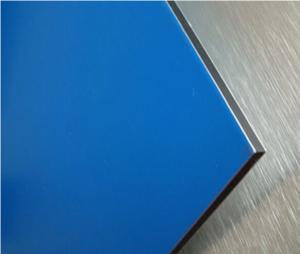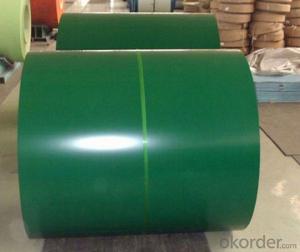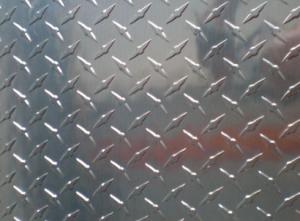24 Ga Anodized Aluminum 4 X 10 Corrugated Aluminum Sheet
- Loading Port:
- China Main Port
- Payment Terms:
- TT OR LC
- Min Order Qty:
- -
- Supply Capability:
- -
OKorder Service Pledge
OKorder Financial Service
You Might Also Like
Aluminium alloys with a wide range of properties are used in engineering structures. Alloy systems are classified by a number system (ANSI) or by names indicating their main alloying constituents (DIN and ISO).
The strength and durability of aluminium alloys vary widely, not only as a result of the components of the specific alloy, but also as a result of heat treatments and manufacturing processes. A lack of knowledge of these aspects has from time to time led to improperly designed structures and gained aluminium a bad reputation.
One important structural limitation of aluminium alloys is their fatigue strength. Unlike steels, aluminium alloys have no well-defined fatigue limit, meaning that fatigue failure eventually occurs, under even very small cyclic loadings. This implies that engineers must assess these loads and design for a fixed life rather than an infinite life.
Another important property of aluminium alloys is their sensitivity to heat. Workshop procedures involving heating are complicated by the fact that aluminium, unlike steel, melts without first glowing red. Forming operations where a blow torch is used therefore require some expertise, since no visual signs reveal how close the material is to melting. Aluminium alloys, like all structural alloys, also are subject to internal stresses following heating operations such as welding and casting. The problem with aluminium alloys in this regard is their low melting point, which make them more susceptible to distortions from thermally induced stress relief. Controlled stress relief can be done during manufacturing by heat-treating the parts in an oven, followed by gradual cooling—in effect annealing the stresses.
The low melting point of aluminium alloys has not precluded their use in rocketry; even for use in constructing combustion chambers where gases can reach 3500 K. The Agena upper stage engine used a regeneratively cooled aluminium design for some parts of the nozzle, including the thermally critical throat region.
Another alloy of some value is aluminium bronze (Cu-Al alloy).
- Q: Are aluminum sheets suitable for HVAC ductwork?
- Indeed, HVAC ductwork can be made using aluminum sheets. The lightweight and durable characteristics of aluminum make it a favored option for ductwork. Its resistance to corrosion is crucial in HVAC systems where moisture and condensation are prevalent. Moreover, aluminum ductwork exhibits excellent thermal conductivity, enabling efficient heat transfer. Furthermore, the simplicity of working with aluminum sheets renders installation and maintenance relatively easy. Ultimately, aluminum sheets guarantee dependable performance and energy efficiency, making them a trustworthy selection for HVAC ductwork.
- Q: Are aluminum sheets suitable for food processing equipment?
- Yes, aluminum sheets are suitable for food processing equipment. They are widely used in the food industry due to their excellent heat conductivity, corrosion resistance, and easy maintenance. Additionally, aluminum is non-toxic and does not react with food, making it a safe and hygienic choice for food processing equipment.
- Q: Can aluminum sheets be used for architectural cladding?
- Yes, aluminum sheets can be used for architectural cladding. Aluminum is a popular choice for cladding due to its durability, lightweight nature, and resistance to corrosion. It is commonly used in both residential and commercial buildings for its aesthetic appeal and versatility in various architectural designs.
- Q: Are 101 aluminum sheets suitable for outdoor signage?
- Outdoor signage can indeed be made from 101 aluminum sheets, which possess the necessary qualities for such purposes. Aluminum is renowned for its ability to endure and resist weathering, rendering it a perfect material for outdoor applications. The 101 aluminum alloy, in particular, has been crafted to possess exceptional strength and resistance against corrosion, making it even more suitable for outdoor signage. It can withstand harsh weather conditions, including rain, snow, UV exposure, and temperature fluctuations, without succumbing to corrosion or deterioration. Moreover, aluminum sheets are lightweight, facilitating their installation and transportation. All in all, 101 aluminum sheets offer a dependable and enduring solution for outdoor signage.
- Q: Is it possible to use aluminum sheets as a material for the exterior walls of a building?
- <p>Yes, aluminum sheets can be used for exterior siding. They are known for their durability, resistance to corrosion, and low maintenance requirements. Aluminum siding is lightweight, easy to install, and can be painted to match various architectural styles. It is also resistant to harsh weather conditions and pests, making it a popular choice for many homeowners and builders. However, it is important to ensure proper installation to maximize its benefits and longevity.</p>
- Q: Hello, I dont really know anything about using a drill or cutting through metal or wood. the thing is I have a project in which I have to drill some holes in 0.04in aluminum. but I really dont know if can use regular drill bits used for drilling wood to drill the holes in my aluminum chassis. do I need to buy other drill bits for cutting metal or can I use the same ones Ive seen used for cutting wood? can I even use the same kind of drills, or do I NEED a huge bench drill with stepper bits?thanks
- Aluminum is softer than steel, so you could just use the ordinary bits that you use for wood, with a hand drill. For cleaner holes, you might want to put wood behind the aluminum as a backing. Also, if you squirt a drop of oil onto the drill area, that will help. If you're trying to drill a really large hole, it might be better to drill small ones, and enlarge with a round file.
- Q: Are aluminum sheets suitable for medical applications?
- Yes, aluminum sheets are suitable for medical applications. Aluminum is a lightweight and durable material that is resistant to corrosion, making it suitable for medical equipment and devices. It is commonly used in the production of medical instruments, diagnostic imaging systems, and surgical trays. Additionally, aluminum sheets can be sterilized easily, further enhancing their suitability for medical applications.
- Q: Are the aluminum sheets suitable for manufacturing power distribution panels?
- Yes, aluminum sheets are suitable for manufacturing power distribution panels. Aluminum is a lightweight and durable material with excellent electrical conductivity, making it ideal for use in power distribution systems. Additionally, it is highly resistant to corrosion, which is crucial for ensuring the longevity and reliability of the panels.
- Q: Are aluminum sheets suitable for HVAC applications?
- Yes, aluminum sheets are suitable for HVAC (Heating, Ventilation, and Air Conditioning) applications. Aluminum is a popular material choice for HVAC systems due to its various beneficial properties. Firstly, aluminum is lightweight, which makes it easier to handle and install in HVAC systems. This is particularly important for large systems that require a significant amount of material. Secondly, aluminum is highly resistant to corrosion, making it ideal for use in HVAC applications where exposure to moisture and condensation is common. This resistance to corrosion ensures the longevity and durability of the HVAC system, reducing maintenance and replacement costs in the long run. Additionally, aluminum has excellent thermal conductivity, allowing it to efficiently transfer heat or cold air throughout the HVAC system. This property helps to ensure efficient heating and cooling, reducing energy consumption and resulting in cost savings for the user. Furthermore, aluminum sheets can be easily formed and shaped to fit specific HVAC requirements, allowing for customized designs and precise installation. This versatility makes aluminum a preferred choice for ductwork, heat exchangers, and other components in HVAC systems. Overall, aluminum sheets are well-suited for HVAC applications due to their lightweight, corrosion resistance, thermal conductivity, and flexibility. These properties contribute to the efficiency, durability, and performance of HVAC systems, making aluminum a preferred material in the industry.
Send your message to us
24 Ga Anodized Aluminum 4 X 10 Corrugated Aluminum Sheet
- Loading Port:
- China Main Port
- Payment Terms:
- TT OR LC
- Min Order Qty:
- -
- Supply Capability:
- -
OKorder Service Pledge
OKorder Financial Service
Similar products
Hot products
Hot Searches
Related keywords


























